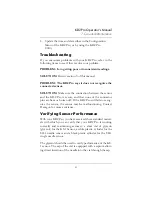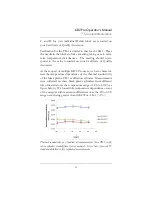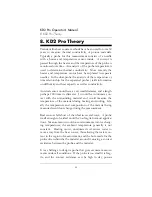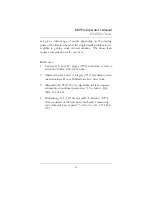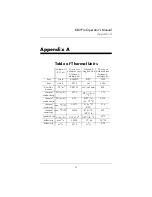
46
KD2 Pro Operator’s Manual
6. Measuring Liquids
6. Measuring Liquids
The KD2 Pro KS-1 sensor is specifically designed to measure
thermal conductivity/resistivity of liquid samples. However,
measuring thermal properties of liquids is difficult, and great
care must be taken for accurate and repeatable results. For an
accurate measurement of thermal properties of a liquid sam-
ple, the sample must be absolutely still in relation to the KS-1
sensor. Convection, or bulk movement of the sample, will
result in error in the thermal properties measurement. Error
from convective heat exchange is often very large, rendering
the thermal properties measurement useless, and must be
avoided. Please note that the
TR-1 and SH-1 sensors are
not designed for thermal properties measurement in liq-
uids
, and will not give accurate results in those materials.
Convective heat exchange in fluids can be broken down into
two categories: forced and free convection. Forced convec-
tion occurs when the fluid is agitated or mixed by mechanical
forces. Free convection may occur when a body of higher or
lower temperature is inserted into a fluid. The temperature
difference between the body and fluid creates density gradi-
ents in the fluid, and these density gradients cause the fluid to
mix. From a practical standpoint certain steps can be taken to
minimize both forced and free convective heat exchange.
To eliminate forced convection, the fluid sample and the sen-
sor must be absolutely still during the measurement. Even
minute vibrations in the sample are often enough to compro-
mise the thermal properties measurement. Some common




















